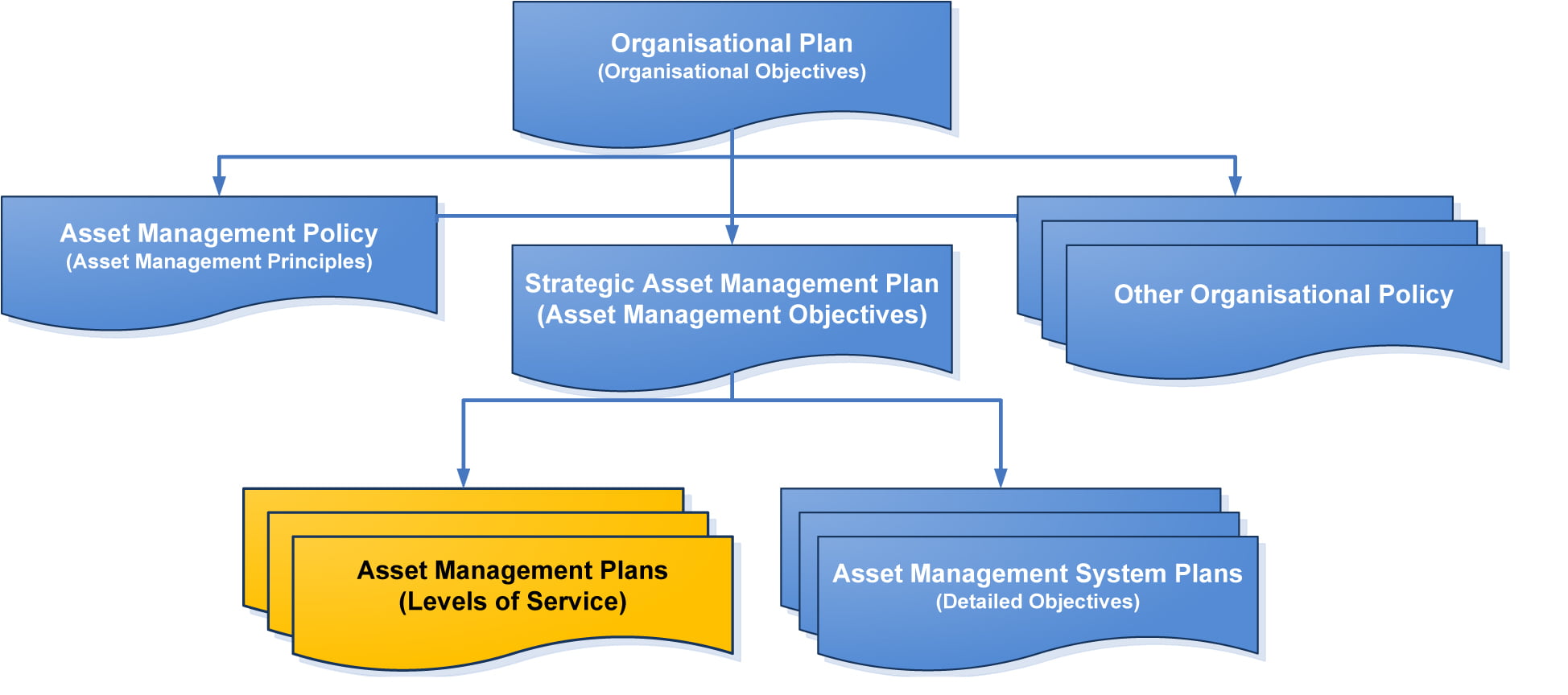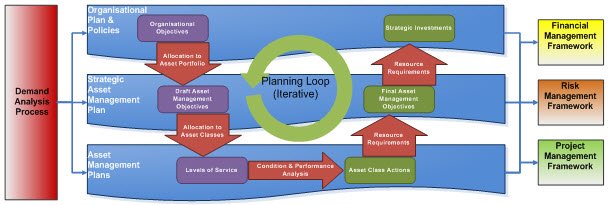

In this article we discuss how to create a good asset management plan that will work for your organisation. This is the fifth in a series of 13 articles on Implementing ISO 55000.
Articles in this seriesAs discussed in the earlier articles in this series, the Core Documents in an Asset Management system are the Asset Management Policy, Strategic Asset Management Plan (SAMP) and Asset Management Plans. We have covered the first two in other articles entitled How to write a good Asset Management Policy and Developing a Strategic Asset Management Plan. In this article we discuss the last – the detailed plans that describe the specific actions that must be taken to address the gaps between “what is” and “what should be”. As with the Strategic Asset Management Plan, there is no single “right way” to structure an Asset Management Plan, but we would like to share our thoughts on how to create a good one that will work for your organisation.
Let’s begin with the ISO 55000 definition of an Asset Management Plan: Documented information that specifies the activities, resources and timescales required for an individual asset, or a grouping of assets, to achieve the organisation’s asset management objectives This definition really captures the intent of the Asset Management Plan – writing down the things that need to be done to deliver the asset management objectives. As these objectives are derived from the organisational objectives (documented in the SAMP), it also emphasis the hierarchical nature of the core asset management documents as illustrated below:

We have indicated multiple plans in this diagram, but we should note that this is not a requirement of the definition, nor is it a requirement of ISO 55001:2014, which simply states:
The organization shall establish, document and maintain asset management plan(s) to achieve the asset management objectives. These asset management plan(s) shall be aligned with the asset management policy and the SAMP. ISO 55001:2014
The standard does require documentation of decision criteria, processes and methods for managing assets, but very carefully does not require these to be part of an Asset Management Plan, even in the guidance in ISO 55002:2014. The guidance does, however, emphasise the need for an iterative planning process that will allow the organisation to balance its objectives with its available resources. Taking all of this together, Asset Management Plans need to capture the lower level outcome of a comprehensive Asset Management planning process that is integrated with other organisational planning activities (in fact, this integration is an additional requirement of ISO 55001:2014) Without going into excessive detail, an ISO 55001 compliant planning process is illustrated below:

The success of an Asset Management Plan should therefore be judged on its performance in these key roles and this allows us to define recommended content for a “good” Asset Management Plan as well as a recommended structure for an organisation’s suite of plans.
In order to deliver on its role as a communication tool, an Asset Management Plan must clearly be read and understood. To this end, we recommend a focus on the following three points with regards to the content of an asset management plan:
We have found the following format useful in this regard:
As can be seen, this structure “tells the story” of the asset, with the final actions building from the issues identified in each section. We suggest that you aim for no more than 6-8 pages of content per asset class, bearing in mind that the audience for the document is not the technical experts in the asset – they already know (or should know!) what is required.
To assist you in putting together your Asset Management Plan, we have created an Asset Management Plan template, with guidance notes, that you can download from here.
We have already discussed how there is no one “right way” to structure your asset management plans. There are, however, some broad classes that you might consider, and these are discussed in this section.
The simplest case is for discipline-led organisations. Here, the organisation has a strong central technical group broken into “disciplines” with clearly defined responsibilities for specific areas of the asset portfolio (for example, many organisations recognise structural, mechanical and electrical disciplines). In this case, it is generally sensible for each discipline to maintain one or more Asset Management Plans, each covering a specific Asset Class. Risks associated with this approach include a prioritisation of technical requirements over business objectives, including inadequate interfaces between the disciplines and poor overall prioritisation of activities. These can be addressed by a strong SAMP process to force cross-functional collaboration.
Another option is a single Asset Management Plan covering the entire asset portfolio. This minimises the effort required in the preparation and maintenance of the plan, and is therefore suited to organisations with simple asset portfolios or minimal Asset Management resources. The risk is, naturally, that the single plan does not provide enough resolution to identify key asset management issues lurking in the detailed performance information for the assets.
Our final option is a zone-led approach. Here, the organisation is divided into operational regions or zones that are largely independent. If there is limited central technical support, it makes sense for each zone manager to run their own Asset Management Plan(s), even where they operate similar assets. In this case, the risk is generally around inconsistent approaches to the same Asset Class, resulting in sub-optimal performance. This can be offset by establishing exchange forums to ensure differences in practice are discussed and best practice is shared across the organisation.
You may, of course, utilise different structures for your Asset Management Plan. For example, you may operate a zone structure, but allocate specific Asset Classes to each zone manager to conduct planning. If this works for you, then we would be delighted to hear about your experience and share it with others. Ultimately, the test of the Asset Management Plans must be the effectiveness of the organisation in achieving its Asset Management Objectives.
Good luck and happy planning!
We offer a range of asset management courses, some of which specialise in ISO 55001 deliverables. If you are interested in reading more about our courses, you can do so by following the links below.